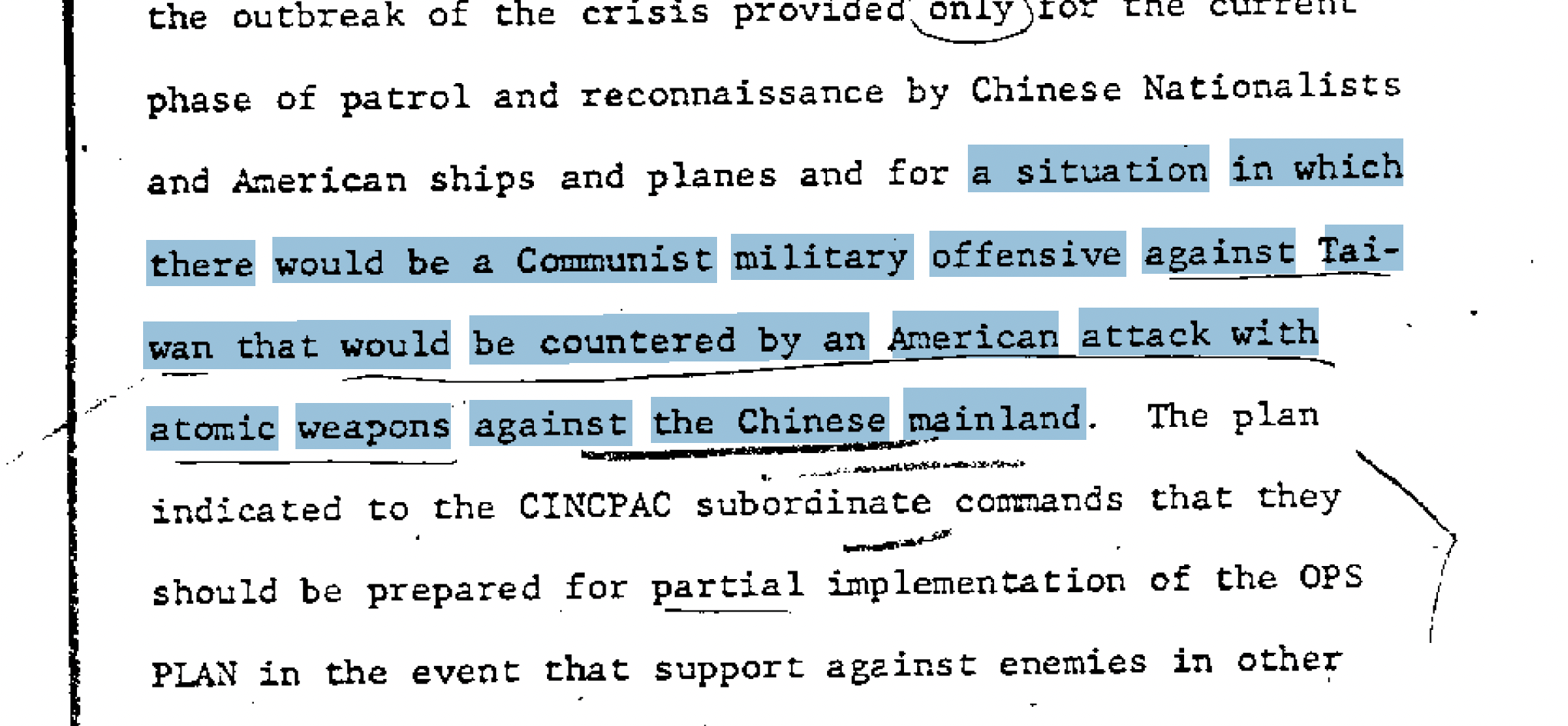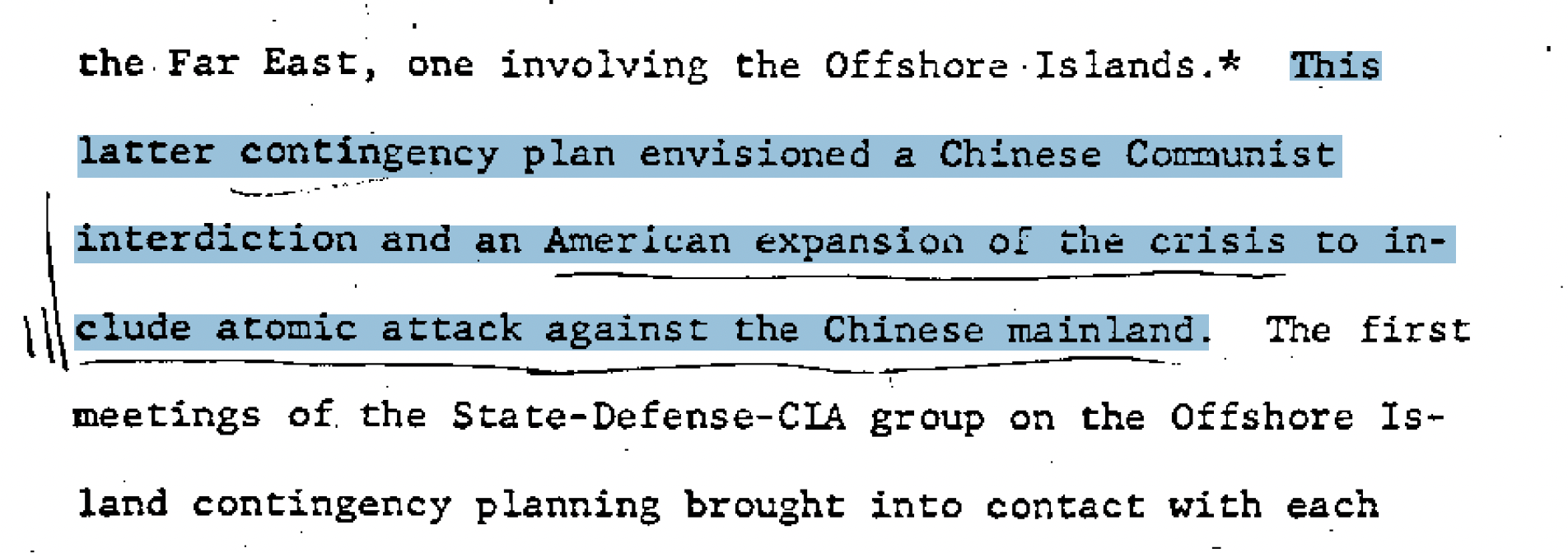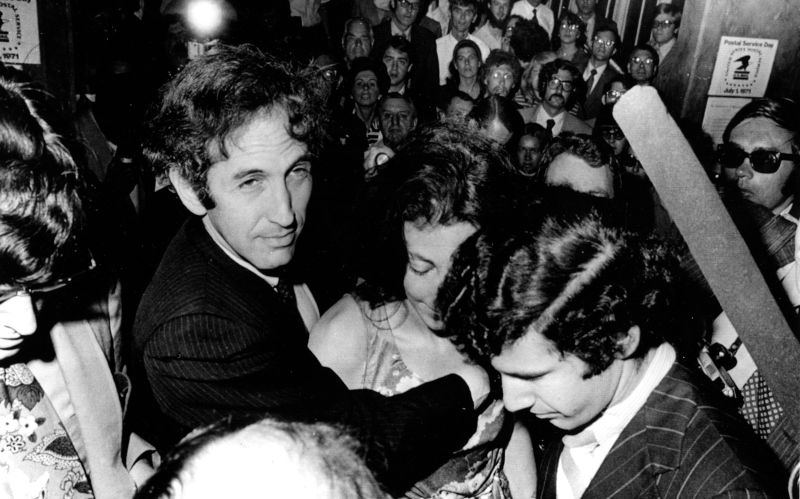Before Ellsberg died, he revealed detailed US plans to nuke China
June 19, 2023
The final revelation of whistleblower Daniel Ellsberg, who died on Friday at the age of 92, was to reveal details of top secret US plans to launch a nuclear invasion of China.
Millions would have died in the bombing, planned for 1958, which was set to start with Hiroshima-sized atomic bombs on the Chinese mainland near Taiwan and then move to larger nuclear weapons on a path going north to Shanghai. The resulting nuclear war would lead to countless deaths across mainland China, Taiwan, and Japan.
The Chinese at the time had only conventional weapons.
While it had long been rumoured that the US had considered nuking China in the 1950s, Ellsberg revealed full details of the secret plans in 2021, sharing the original papers documenting the plans. There was a little coverage of the revelation in some mainstream media outlets, but then the story quickly disappeared.
Heres what happenedand how details were hidden for more than half a century.
Tension across the Straits
When there was tension across the waters between parties on mainland China and a military group, the Nationalists, which had fled to the island of Taiwan in 1958, US military officials met to discuss what role they should play. Mainland fighters were making headway against the group on the island, a Joint Chiefs of Staff meeting was told.
The US decided it was in their interest to maintain control of the region by holding key islands in the South China Seas. If mainlanders fought with the Nationalists on Taiwan, the US would launch an invasion to destroy the war-making capability of Communist China.
The decision was made that the US would act in a situation in which there would be a Communist military offensive against Taiwan that would be countered by an American attack with atomic weapons against the Chinese mainland.
(Its interesting to note that planners repeatedly used the word communist to reinforce negativity about China, a technique still used by the mainstream media today, despite the country having run a state capitalist system for more than 40 years.)
Islands useful to America
Classified notes of the meetings reveal that there was no discussion of the need to defend people living on the island of Taiwan, but were wholly focused on the military value of offshore islands to US maintenance of control of the region.

US military leaders believed at the time that numerous islands in addition to Taiwan were worth defending with the use of atomic weapons. As well as Taiwan, there were seven others: the ones known to the west at that time as Big Quemoy, Little Quemoy and the five-strong Matsu group. (An earlier document had 13 islands listed as worth protecting.)
On August 7 of 1958, a revised US plan was issued indicating that Phase 1 was based on patrolling the area, while Phase 2 would involve atomic weapons strikes by both sides. The strategy was for The 13th Airforce commander to direct atomic operations and the initial operations were to emphasise pre-planned strikes against enemy airbases.
A later contingency plan, co-drafted by CIA personnel, clearly specified a US nuclear invasion of China, described as: an American expansion of the crisis to include atomic attack against the Chinese mainland.

Nuclear war Inevitable
At one meeting of US military leaders, Air Force General Nathan Twining, chairman of the Joint Chiefs of Staff, said the use of atomic weapons was inevitable and planning must proceed on that assumption.
The nuclear invasion of China would begin with US fighter bombers dropping atomic bombs of 10 to 15 kilotons (the bomb dropped in Hiroshima was 15 kilotons) on the mainland near Taiwan, namely Xiamen, then known as Amoy. They would initially aim at airbases so as to deflect any criticism from humanitarians.
A summary said: He [Air Force leader Twining] noted that the U. S. military would begin by attacking a few of the fields in the Amoy area, using low- yield ten to fifteen kiloton nuclear weapons. At this point the Chinese Communists hopefully would break off. But if they did not , the United States, Twining indicated, would have no alternative but to conduct nuclear strikes deep into China as far north as Shanghai.
The Chinese would fight back and a nuclear war would take place, the summary said. The Chairman of the Joint Chiefs suggested that this would almost certainly involve nuclear retaliation against Taiwan and possibly against Okinawa.
This seems odd, since China had no atomic weapons, but US military leaders mentally blurred China and Russia together (exactly as they do today) into a single, monolithic commies block. Retaliation by the Chinese was guaranteed because the Russians had atomic bombs. The resulting nuclear war would leave millions of people in Asia dead (but relatively few Americansthat was the beauty of nukes, as shown in Hiroshima and Nagasaki).
Yet the US military never got to launch the atomic bombers.
The Chinese switched to a focus on mainland issues and adopted what would today be called an attitude of strategic patience with the hostile group which had moved to Taiwan; a policy that continues today.
Ellsberg’s revelations
How was all this revealed? In the late 1960s and early 1970s, Daniel Ellsberg, a Harvard-educated marine with top level access to military intelligence, became shocked at the sheer immorality of US foreign policy, which he realised was built on lying to everyone about what the military and the intelligence services were doing.
In 1971, he leaked a top secret history of the Vietnam War, which the press dubbed the Pentagon Papers. He was threatened with years in jailbut when people saw the depth of the deception that was being carried out, he was gradually recast as a hero, and a judge set him free. He became known as the first whistleblower.
A second secret Document
But unknown to anyone, Ellsberg had also copied another top secret study, written in 1966, which summarised military plans to nuke China in 1958. While others had talked about the existence of such a plan, details had never been released.
Decades passed. Ellsberg did not disclose the documents.
Official papers covering US military activity in Asia were eventually declassified over the years, but sections about the US planning first-strike nuclear invasion of China were removed, remaining as top secret information.
Ellsberg realised that he alone had the full, uncensored document.
History repeats itself
In 2021, Ellsberg realised that history was repeating itself, with the US again flirting with the idea of military adventuring which was carelessly leading to a possible nuclear war based around Taiwan.
Still staunchly opposed to the way his government goads conflicts into being and then blames the victims, he found the 1966 document and released it to the public.
But times had changed. In the early 1970s, the media was shocked by revelations of US military provocations in East Asia, and was happy to give him the headlines and hold the government to account.
But half a century later, Ellsberg released a bombshelland the mainstream media had relatively little interest. After brief coverage, the story disappeared.
The media, he realised, had become part of the war machine. US manipulates politics in Ukraine, invents a genocide in Xinjiang, stirs up protests in Iran, sponsors trouble in Hong Kong, and what happens? Journalists edit out all indications of US provocation, and blame the victims. O those awful Chinese. O those dreadful Iranians. O those monstrous Russians.
In a final interview published by Politico on June 4, 2023, Ellsberg said the United States was still running a covert global empire, and the situation was dangerous. We are on the edge of blowing up the world over Crimea or Taiwan or Bakhmut, he warned.
He said the U.S. had a long history of creating needless conflicts for its own advantage, and it is continuing to do that, taking us to the edge of nuclear catastrophe.
It’s still worth speaking out
Although he is a hero to many, Ellsberg was always hard on himself for delaying the release of information. He sat on the secretly copied Vietnam document for a yearand the China invasion story for five decades.
The media, he believed, was now complicit in US government wrongdoing, and whistleblowers have less chance of making a real difference. Those who speak out may simply ruin their own lives.
But he continued to believe that it was worth trying. In 2011, he wrote: The personal risks are great. But a war’s worth of lives might be saved.

